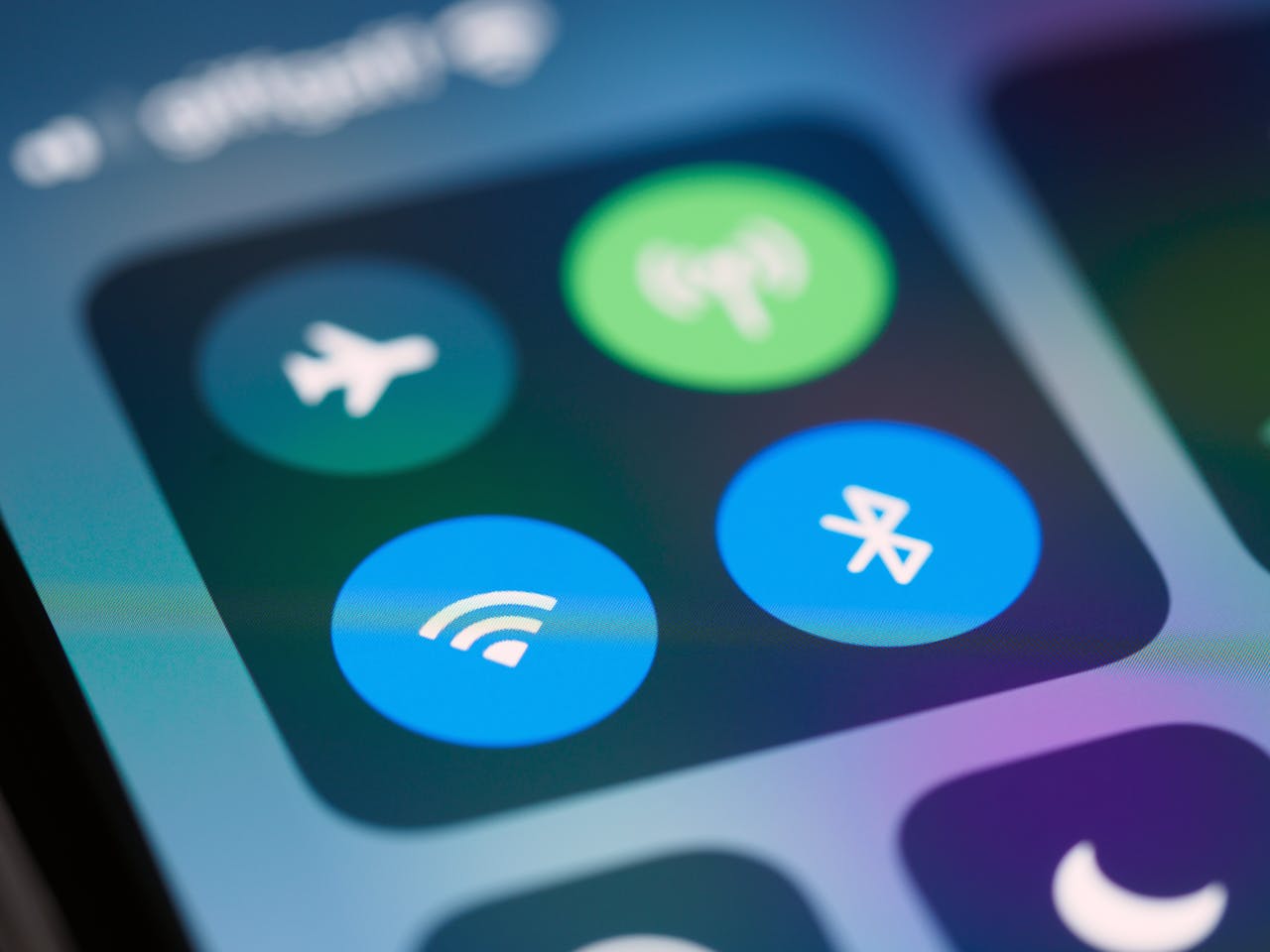
Should You Worry About Using Bluetooth?
It’s nearly unavoidable now, even if you’re not using the technology found in earbuds, watches, fitness trackers, speakers, cars, and even appliances.
The convenience is undeniable, but the constant exposure raises the question: Is Bluetooth really harmless?
While research is still ongoing, there are several areas where Bluetooth exposure may pose risks. And it’s worth paying attention, especially since most of us are exposed to these signals daily, often at close range.
Five Potential Harms Linked to Bluetooth
1 - Increased EMF Exposure:
Bluetooth uses radiofrequency radiation (RFR), the same type of non-ionizing radiation as Wi-Fi and cell phones, but at lower power.
That sounds reassuring until you consider placement. Earbuds sit inside the ear canal next to delicate brain tissue. Smartwatches press directly against the skin all day long.
Even low-power signals can matter when exposure is constant and localized. Research suggests these fields can contribute to oxidative stress, which damages cells and DNA over time (NIH review).
This kind of EMF exposure, when constant, may result in downstream health issues. The biggest problem is that Bluetooth is so new, we don’t know what happens when someone is exposed to it for 50+ years.
2- Potential Neurological and Cognitive Concerns:
The brain is susceptible to electromagnetic fields. Some animal studies have found that chronic RFR exposure may alter neurotransmitter balance, affect learning and memory, and disrupt sleep cycles.
Human studies are mixed, but symptoms like headaches, brain fog, and insomnia are reported more frequently among those with higher EMF exposure. While no single study “proves” Bluetooth is harmful, the cumulative evidence suggests the nervous system doesn’t love being bathed in low-level radiation 24/7.
3- Sleep Disruption and Melatonin Suppression:
You know how much I value sleep as a health booster.
So if you want better sleep, Bluetooth may really cause you to struggle.
As you know, sleep is when the brain detoxes and repairs itself. There’s evidence that EMFs, including those from Bluetooth, may interfere with melatonin production—the hormone that regulates circadian rhythm. A 2012 review found that EMF exposure could reduce melatonin levels, potentially leading to insomnia, restless sleep, or poor recovery. That’s especially concerning given how many people sleep with smartwatches or Bluetooth-enabled trackers on their wrists or under their pillows.
4 - Fertility and Reproductive Health:
There are so many things that are working against fertility in the modern age, from toxins to endocrine disruptors, and now likely EMFs.
And since many keep their phones in their pockets, or work with laptops on their laps, men who keep their phones or Bluetooth devices in their pockets may be exposing their reproductive organs to low-level RFR for hours daily.
Multiple studies link EMF exposure to reduced sperm motility, abnormal morphology, and lower overall fertility. Women may also be affected, though research is still limited. Considering declining fertility rates, this is a risk worth acknowledging.
5 - Cumulative Burden with Other EMFs:
Bluetooth doesn’t exist in isolation. Most people are exposed to cell towers, Wi-Fi routers, 5G networks, and countless household electronics throughout the day. Each one contributes to the body’s “EMF load.”
Even if Bluetooth itself is relatively weak, when layered onto everything else, it may push sensitive individuals over the threshold, manifesting as chronic fatigue, anxiety, cardiovascular irregularities, or increased inflammation.
This is probably one of the main dangers; all these EMFs stacked on top of one another are a mess, and we have no idea if any of them will harm us long-term.
You can’t get away from these frequencies, really, but there are possible ways to mitigate their impact.
Three Ways to Reduce Risk and Build Resilience
Giving up Bluetooth entirely isn’t realistic for most people. But you can reduce exposure and strengthen your body’s defenses.
Here are three steps to take that may help.
1. Limit Proximity and Duration
-
Use wired headphones for long calls.
-
Switch to speakerphone when possible.
-
Don’t wear Bluetooth earbuds all day—treat them as a tool, not an accessory.
-
Keep Bluetooth devices out of the bedroom to protect sleep (and put airplane mode on at night).
2. Support Cellular Health with Antioxidants
Oxidative stress is one of the primary mechanisms EMFs use to damage tissues. Nutrients like vitamin C, glutathione, N-acetylcysteine (NAC), and CoQ10 can help buffer this effect. A diet rich in colorful vegetables and berries provides natural antioxidants, while targeted supplements can give additional support.
3. Adopt Low-EMF Habits
-
Turn off Bluetooth when not in use.
-
Use airplane mode when you don’t need constant connectivity.
-
Choose wired internet at home when possible.
-
Place phones and devices away from the body (especially reproductive organs).
The Bottom Line on Bluetooth
Bluetooth is just one piece of a much bigger EMF puzzle. While it may not be the most powerful signal we’re exposed to, its proximity to the body and round-the-clock use make it worth taking seriously.
As I’ve discussed before, integrative medicine isn’t just about food and supplements, it’s also about recognizing hidden stressors in the environment and making smart choices to reduce their impact.
Look, you don’t need to live in fear of technology.
But you do need to be intentional.
By limiting exposure, supporting your body’s resilience, and practicing low-EMF habits, you can enjoy the benefits of modern devices without ignoring the potential risks.

